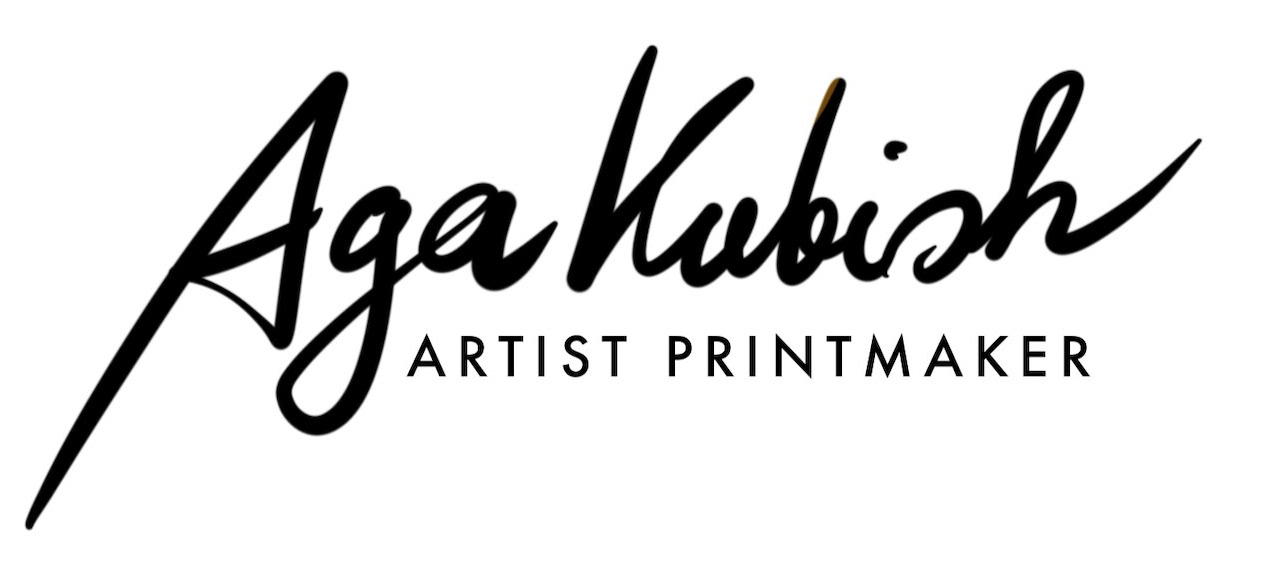Linocut (lino printing) is a relief printmaking technique: an image is carved into linoleum, inked on the surface and hand-printed onto fine art paper. The result is bold, tactile and unmistakably analogue — from crisp lines to velvety blacks. Below, a concise guide to the aesthetics, materials, editions and why collectors love linocuts.
Gunning Etching Press No3 - printing tool
'Stairs II' Linocut Print - reveal moment
Lino Printing (Linocut): A Concise Guide
What is linocut?
Linocut (often called lino printing) is a relief technique: the artist carves away areas that should stay white and inks the remaining surface. Pressure transfers the inked image to paper. The process can be entirely handmade — from carving to hand-printing — which gives each impression a subtle, human “signature” in the surface.
Key traits:
- graphic clarity, strong contrast, sculptural line
- visible pressure/ink character on fine papers
- slight variation between impressions (the beauty of originals)
A brief context
Linocut took off in the 20th century as an accessible alternative to woodcut. From avant-garde illustration to large contemporary prints, it remains a favourite for artists who want both precision and physicality without digital intermediaries.
Materials & look
Linoleum: stable, smooth, accepts very fine cuts; large blocks allow ambitious scales (e.x. >> Habitat 150×100 cm).
Inks: oil- or water-based printmaking inks; the surface can range from satin to rich, inky blacks.
Paper: cotton papers like Somerset (Satin / Velvet, 250–300 gsm) enhance detail, show deckle edges and age well archivally.
Printing: by hand (baren/bone) or on press (np. Gunning Etching Press)
'Roots' - carving process of lino block
'Sanctuary' - carving in progress
Aesthetics (why collectors care)
Line as form: carved lines build structure, light and shadow (see Stairs II, 100×70 cm — the rhythm of architecture and foliage).
Scale: large formats have real presence in both homes and galleries.
Tactility: a true print, not a digital print; a direct trace of hand and tool.
Edition integrity: fixed limits, title, signature and numbering — often with the paper’s watermark visible.
Editions, signatures & authenticity
Linocuts are original prints, not reproductions.
Typical pencil marks (below the image):
Typical pencil marks (below the image):
- edition number (e.g., 7/50),
- title,
- artist’s signature and year.
Large works often include a certificate and details of the paper (e.g., Somerset 300 gsm).
Large works often include a certificate and details of the paper (e.g., Somerset 300 gsm).
Care & framing (for collectors)
Archival framing: mount/mat and UV/AR glazing are recommended, especially for deep blacks.
Float mounting: beautifully shows Somerset deckle edges.
Light: avoid direct sunlight; prints prefer moderate conditions.
'Ferns' Linocut - carving the block
Contemporary directions (examples from my work)
Botanical & architectural linework: >> Stairs II (100×70 cm) — a structural dialogue between glasshouse geometry and leaves.
Large-scale monochrome: >> Habitat (150×100 cm) — dense, organic “worlds.”
Metallic on dark papers: >> Octopus III — Golden Edition (80×60 cm) and >> Monstera Leaf — Gold (50×70 cm).
Quiet maximalism: >> Sanctuary (100×70 cm) — space to breathe between lines.
FAQ (no how-to)
Is a linocut an original?
Yes. Each impression is an original print pulled from the block, signed and numbered.
Yes. Each impression is an original print pulled from the block, signed and numbered.
Why do editions vary slightly?
They’re hand-printed — tiny differences in ink and pressure occur. That’s a feature, not a flaw.
They’re hand-printed — tiny differences in ink and pressure occur. That’s a feature, not a flaw.
Which paper is best?
Cotton rag papers (e.g., Somerset Satin/Velvet) — stable, archival, and beautifully receptive to ink.
Cotton rag papers (e.g., Somerset Satin/Velvet) — stable, archival, and beautifully receptive to ink.
